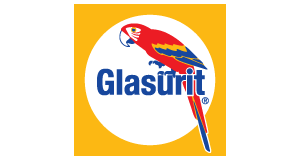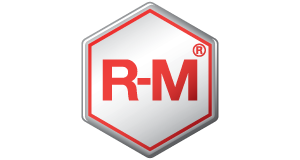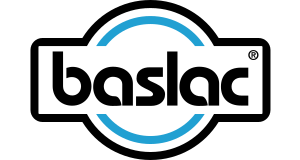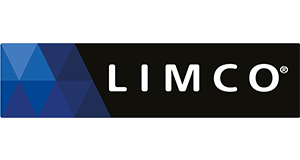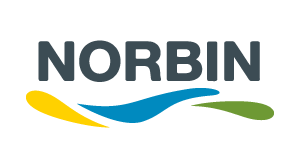
BASF Breaks Down 2017 Automotive Colors Market
SOUTHFIELD, MI, February 8, 2018 – With its “BASF Color Report For Automotive OEM Coatings,” BASF’s Coatings division provides a global analysis of the color distribution in the 2017 automotive market. Globally, white maintains its strong position in all vehicle segments and is still the overall number one color with a market share of almost 40 percent. Together with black, gray, and silver, the achromatic colors continue to be the most prominent.
Regarding chromatic colors, the share of blue and red is almost equal, followed by brown. The global overview of the car segments shows the smaller the car, the more vivid the color.
In a specific segment, Sport Utility Vehicles (SUVs) significantly influence the popularity data due to increased sales and model choices. While white and black are still strong colors within this segment, red, blue, and especially brown are gaining popularity. This mirrors the expected growth and diversification of the model range of these robust vehicles.
Further information on the global color distribution
Achromatic vehicle colors with special effects are dominant in North America
The North American Color Report subsection points out that new pigment technologies increase the demand for special effects that shimmer and shine. This leads to a larger variety within the color segments – especially with the achromatics white, black and silver/gray, which are the most popular vehicle colors in North America.
Even in the growing segment of electric vehicles, achromatic colors are still preferred – although gray/silver appear to be more popular than white or black at this early stage in electric vehicle development. Color aesthetics are being increasingly considered in combination with functionality, so the ability to be detected by sensors has more relevance than ever before, and BASF will continue to monitor these developments.
“Our trend research shows the continued importance of the achromatic color space, dominated by white, black and gray,” said Paul Czornij, Head of Design for BASF Color Design Excellence Group in North America. “It is critical for us to innovate in these areas, so we look for unique ways to find colors that capture the essence of the customer’s brand to help define the shape of the car.”
Blue and red are the key chromatic colors in North America. The blue color space is also very versatile and can achieve a large diversity of shades, ranging in lightness, saturation, and subtle hue changes. Other colors, such as orange, are showing up in the analysis. These shades provide more options for the consumers to tie in to their preferences.
Further information on the BASF North American Color Report For Automotive OEM Coatings 2017
Blue and gray shades strengthen their positions on European roads
The findings of the European Color Report subsection reveal that achromatic colors are still the most popular. Approximately 78 percent of all cars were painted white, black, gray or silver last year, marking a continuing trend. Among the achromatic colors, the proportion of gray increased to 19 percent, bringing its popularity level to the same as black. The growing share of gray is underlined by the increasing diversity of gray shades. With more than 100 variations, gray has the second highest number of shades next to blue.
“Gray – with its concrete and glass associations – represents the most urban color and has significantly increased over the past years,” said Mark Gutjahr, Head of Automotive Color Design EMEA at BASF’s Coatings division. “With shades from light and mid-grays to dark anthracite, it represents a huge variety and, in so doing, has gained its increased market position.”
Of the chromatic colors, blue continues to trend strongly. While its overall share of 10 percent remained stable, the proportion of blue increased considerably in terms of its share in the chromatic palette – nearly every second chromatic car produced in Europe in 2017 was blue – a trend predicted by BASF’s Coatings color designers and reflected in the numerous blue shades in the last color trend collections. With nearly 130 different variations, blue also remained number one in terms of color diversity.
Further information on the BASF European Color Report For Automotive OEM Coatings 2017
Bright reds and classy colors expressing individuality continue to gain popularity in mature Asia Pacific markets
According to the Asia Pacific Color Report subsection, the automotive coatings market in Asia Pacific is being driven by increasing vehicle population and the diversity of the different regional conditions. With an overall distribution of 49 percent, white is the favorite color in the region. Due to the cultural context in Asia Pacific, white colors are associated with the positive image of purity and intelligent, advanced technology. White cars have been showing strong growth in Asia Pacific over the past few years. Apart from white, brown colors also are gaining popularity, particularly for mid-size SUVs. Both white – especially pearl white – and brown are positioned as stylish colors with luxurious flavor that are welcomed by the Asia Pacific market.
Bright red, as a provocative yet smartly individual color, is highly popular in the chromatic range of automotive colors within the automotive market in Asia Pacific. In general, red attracts attention, which is an important factor in the mature markets of Asia Pacific.
Blues and subtle grays are gaining more attention in the market. These colors are especially present for the environmentally friendly models which are based on advanced design concepts and a “more-than-a-car” image. Finally, technology and individuality have, and will continue to have, an impact on automotive colors.
“Newly emerging Asian-built electric vehicles (EVs) will influence new color trends,” said Chiharu Matsuhara, Head of Color Design Asia-Pacific at BASF’s Coatings division. “We expect more unique and individual colors for small EV segments, including two tones and three tones which make this segment more attractive.”
Further information on the BASF Asia Pacific Color Report For Automotive OEM Coatings 2017
Trend competence and innovative color concepts
The analysis of the global distribution of automotive colors, BASF Color Report For Automotive OEM Coatings, supplements the Automotive Color Trends published annually by BASF’s Coatings division. While the trend collection presents color concepts that will shape the automotive future, the Color Report showcases current market preferences and refers to the previous year’s data. Within recent years, color diversity has increased and the possibilities for innovative color concepts are multifaceted. BASF works closely with OEMs to compose the desired look and feel, underlining the spirit of the automotive brands.
Hundreds of colors are currently in the market and they include a broad selection of unique effects such as pearl or metallic. Moreover, functionalities of coatings play an increasing role. For example, paints with an integrated temperature management strengthen a sustainable future mobility. These functional coatings minimize the heating of the car surface and thus the heating of the interior. This minimizes the need for air conditioning, leading to reduced fuel consumption or an extended range of electric cars.
